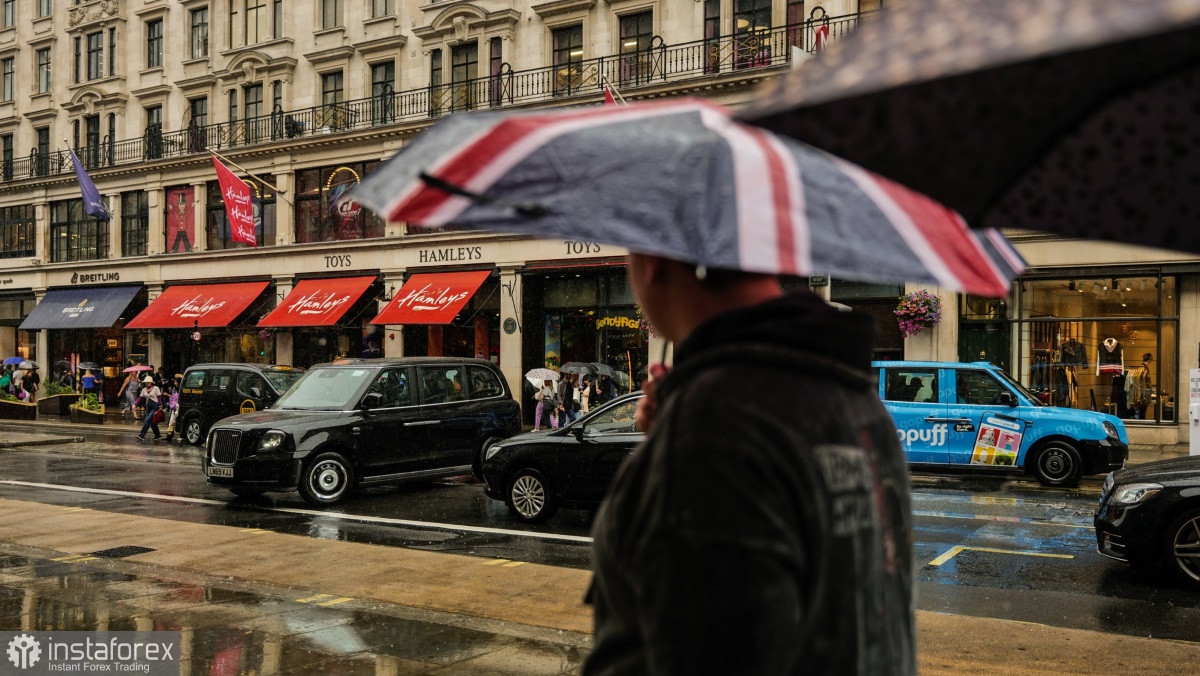The British pound predictably weakened in response to news about a deeper-than-expected decline in UK retail sales for July. A combination of cooler and rainy weather impacted shoppers who also became more cautious about spending.
Today's report from the Office for National Statistics (ONS) revealed a 1.2% decrease in retail sales for the previous month, following growth of 0.6% in June. Economists had predicted a more moderate decline of 0.6% on a monthly basis. The figures indicate that for the first time in four months, sales failed to meet expectations. This suggests that households are beginning to buckle under the strain of rising prices and elevated interest rates. "Although the rainy weather holds some responsibility for the drop in retail sales in July, underlying demand also seems to have reduced at the outset of the third quarter," noted the ONS.

Against this backdrop, the pound depreciated by 0.2% against the dollar, reaching 1.2720 and followed other G10 risk assets downwards amid a broader resurgence in demand for the US dollar. We will delve into the technical aspects a bit later.
The report further highlighted that since the onset of the cost-of-living crisis in 2021, consumers have been spending more while buying less, reflecting the higher prices of goods. These retail trade figures present a stark contrast to recent reports indicating economic growth in the UK, which have been associated with wage increases and persistently high inflation.
Moreover, the report mentioned that many retailers are optimistic about the coming months, expecting a surge in spending as English fans celebrate the Women's Football World Cup finals and households prepare for back-to-school shopping.
However, despite the slight reduction in July, it is evident that households continue to show resilience in the face of the cost-of-living crisis. A relatively tight labor market means that the perceived risk of job losses remains low. As a result, households have been inclined to spend more and save less out of caution.
Breaking down sales by category, food sales witnessed a decline of 2.6%. Consumers attributed this to the elevated prices they encountered. Supermarkets recorded reduced sales in clothing and food. Overall sales in non-food stores, including department stores, contracted by 1.7% in July. Nevertheless, this slump was partially offset by a 2.8% surge in online sales, with companies rolling out various promotional offers. The share of online sales in July was the highest since February 2022, accounting for 27.4% of total sales. On the brighter side, sales volumes of automotive fuel increased by 0.7% in July, providing much-needed support to the overall value, especially after a dip in the preceding month.
As for the technical outlook for GBP/USD, it stays in a range-bound market. The pair may see a confident rise only if bulls seize control over the 1.2765 level which will boost hopes for a recovery towards 1.2810. This move will pave the way towards a higher target at 1.2850. In the event of a decline, bears will aim to push the pair below 1.2720. Breaking through this range will dent bullish positions, dragging GBP/USD down to the 1.2680 low with prospects of reaching 1.2650.
As for EUR/USD, the euro stays under pressure. To regain control, buyers will need to push the quote above 1.0890. This would open the door back to 1.0920 and the price may test the 1.0950 level. From there, the pair may climb to 1.0980 although this might be challenging without support from large market players. In the case of a decline, major buyers are expected to step in only around 1.0860. If nothing happens at this level, it might be wise to wait until the price retest the 1.0840 low or consider long positions at 1.0810.
 English
English 
 Русский
Русский Bahasa Indonesia
Bahasa Indonesia Bahasa Malay
Bahasa Malay ไทย
ไทย Español
Español Deutsch
Deutsch Български
Български Français
Français Tiếng Việt
Tiếng Việt 中文
中文 বাংলা
বাংলা हिन्दी
हिन्दी Čeština
Čeština Українська
Українська Română
Română

